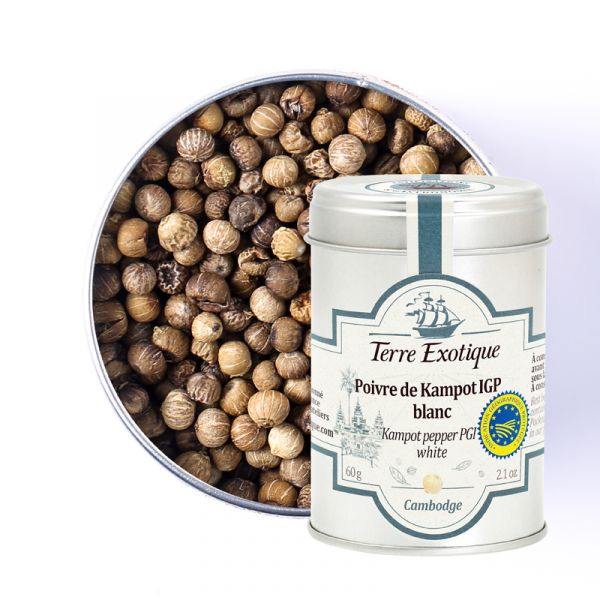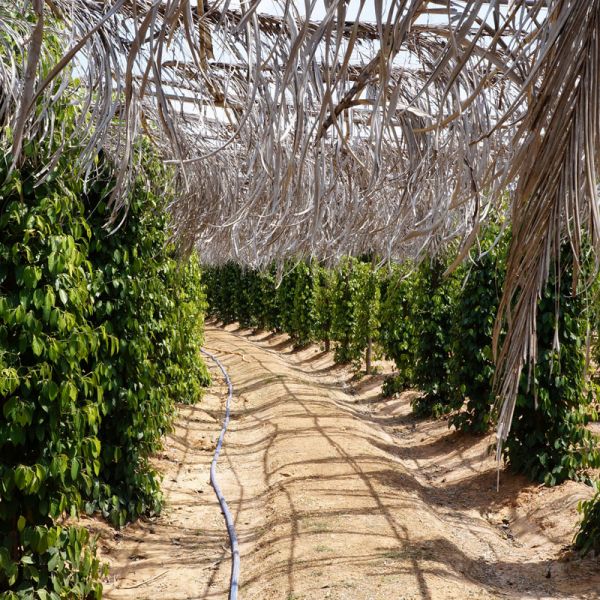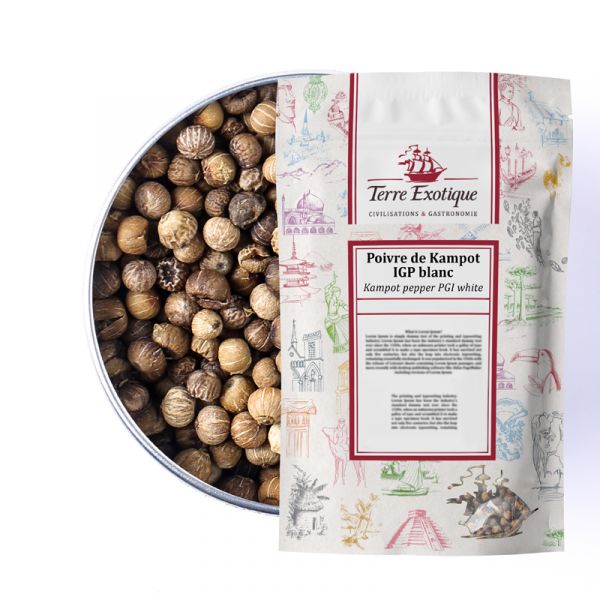





In Which Dishes to Use Kampot White Pepper?
Explore Exceptional Flavors
Kampot white pepper is a true culinary treasure and is the ideal condiment to enhance all your dishes.
How to Use Kampot White Pepper in Your Cooking?
Pair Kampot white pepper with fish, shellfish, strawberries, and fruit salads to elevate your dishes. It pairs wonderfully with white meats and accompanying sauces. It can also be used in desserts, adding a touch of refinement to even a simple dessert.
Here are some recipe ideas to use Kampot white pepper in your dishes:
- - Kampot pepper salmon fillet: before cooking, add Kampot white pepper to your salmon fillets;
- - Quinoa and spinach stuffed peppers: add Kampot white pepper to the mixture before stuffing the peppers;
- - Tarama: add Kampot white pepper at the end of blending the ingredients and serve;
- - Sweet and sour sauce: add Kampot white pepper before serving.
The Aromas of Kampot White Pepper: A Sensory Journey
Kampot white pepper offers spicy and minty notes that bring freshness and dynamism. Fruity, with citrus hints, and enhanced by a touch of eucalyptus, Kampot white pepper has a delicate, subtle, and refined flavor.
Kampot White Pepper and Its Botany
Kampot white pepper belongs to the Piper nigrum family, a vine that grows on a support and can reach 4 meters in height. It requires a tropical climate with high temperatures and humidity, as well as an alternating shade/light environment to develop properly. There are 4 colors of Piper nigrum: green pepper, black pepper, red pepper, and white pepper.
What Differentiates White, Black, Red, and Green Peppers?
The difference lies mainly in the degree of maturity at which the pepper is harvested, which has a significant impact on its aromatic characteristics:
- - Green pepper: it is picked before reaching maturity, giving it fresh and lemony notes;
- - Black pepper: it is harvested just before full maturity and then sun-dried, which gives it spicy and robust flavors;
- - Red pepper: it is picked at optimal maturity, with its pericarp preserved to maintain its red color and spicy flavor;
- - White pepper: it is also harvested at optimal maturity, then stripped of its pericarp through retting, making it less pungent than black pepper. It is then dried, followed by calibration and sorting to keep only the best pepper grains.
Tracing the History of Kampot White Pepper
Kampot White Pepper: A Survivor Throughout History
Kampot pepper dates back to the Angkor kingdom. Written records of Kampot pepper cultivation can be found in the travel accounts of Chinese explorer Tcheou Ta Kouanau in the 13th century... According to his accounts, Chinese immigrants from the Hainan region introduced pepper to Kampot. They were already cultivating pepper in China.
It was during the colonial period that Kampot pepper reached its peak and became a major imported commodity. Starting from 1975, the Khmer Rouge nearly wiped out its production, replacing it with rice. It was only 30 years later that a few families of growers breathed new life into Kampot pepper.
Kampot White Pepper: A Protected Pepper
In 2009, Kampot pepper became the first Cambodian product to receive a geographical indication (GI) status. Cambodian producers sought help from the French Syndicate of Piment d'Espelette Producers to obtain the GI status from the French Development Agency (AFD). The implementation of the GI has multiplied the incomes of Kampot pepper producers by 10. This illustrates a beautiful example of solidarity among international producers.
| Allergen | Absence |
|---|---|
| Native country | CAMBODGE |
| Genus and botanical species | Piper nigrum |
| Ingredients | Kampot pepper PGI white |
| TRACES EVENTUELLES D'ALLERGÈNES | céleri, sésame, moutarde, fruits à coques. |
 Français
Français 





